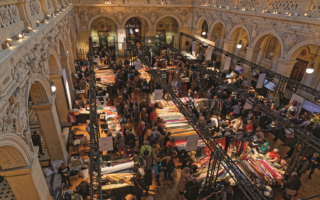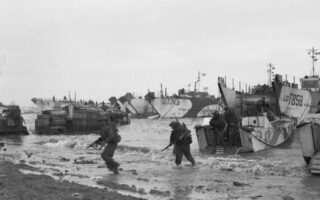The complete guide to the Tour de France
Discover the route of the 2016 Tour de France, the best places to cheer on the peloton and the history of the world’s most famous cycle race
THE 2016 TOUR DE FRANCE ROUTE
Unveiled last October, the official 2016 Tour de France route contains two time-trial events, both of which are individual. The organisers have divided the remaining 19 stages into three categories: flat stages, medium mountain stages, and mountain stages.
This year’s Grand Départ will begin at Le Mont-Saint-Michel in Manche and will continue on to the D-Day beaches. The participants will then travel south to Angers in the Loire valley and down to Montauban in the south-west of France and on to Pau, before moving through the Pyrénées towards Carcassonne, on to Montpellier, then Mont Ventoux. The race will also call at La Caverne du Pont d’Arc – home to prehistoric cave art – before venturing off into the Alps to resorts including Megève and Morzine. As always, the race will end on the Champs-Élysées, in Paris.
BEST PLACES TO WATCH THE TOUR DE FRANCE
The island abbey and UNESCO World Heritage site provides a spectacular backdrop for the Grand Départ. Competitors begin the first of 21 stages on the 3,519-kilometre race through valleys, pastures and mountains to the finish line in Paris on 24 July.
Utah Beach, Sainte-Marie-du-Mont
The opening stage on 2 July is a relatively comfortable run across flat terrain, ending at the Normandy beach where the first American troops landed on D-Day in 1944. Visitors can pay their respects to the fallen at the Utah Beach Museum.
Saumur
The Loire Valley town known for its tufa-stone buildings and Cadre Noir riding school is the starting point for the fourth and longest stage, which extends for 232 kilometres to Limoges. The peloton will follow the River Loire towards Tours and then head south-east through the flat landscape of Vienne.
You’ll have two chances to cheer on the cyclists in the sun-dappled Languedoc city as it sees the finish of the 11th stage from Carcassonne on 13 July and the start of the 12th on the day of the Fête Nationale. The 185-kilometre route through undulating, vine-clad hills culminates in the calf-straining ascent of Mont Ventoux – a Tour de France classic.
La Caverne du Pont-d’Arc, Ardèche
The replica of the prehistoric Chauvet cave – site of the oldest-known figurative paintings in the world – is the finishing point of the first of Le Tour’s two individual time trials. The 37-kilometre dash on 15 July follows roads overlooking the Gorges de l’Ardèche and the natural limestone bridge that spans the river.
HISTORY OF THE TOUR DE FRANCE
The first Tour de France
At just after 3pm on 1 July 1903, 60 cyclists lined up in Montgeron to the south-east of Paris to embark on the first Tour de France. The cyclists rode through the night for 467 kilometres to complete the epic first stage to Lyon. When Maurice Garin and Émile Pagie crossed the line the next morning after 18 hours of cycling only one minute separated them. This exciting climax to the first-ever stage would ensure the Tour’s lasting popularity.
Garin won two more of the six stages and took the Tour title by almost three hours, a margin that still hasn’t been beaten. Despite the start being delayed by two weeks due to a lack of interest among cyclists, 20,000 fans turned out to cheer Garin into the Paris Vélodrome on 18 July. Only 20 other riders completed the race.
The development of Le Tour
For L’Auto, the magazine that had organised and promoted the race, and its editor Henri Desgrange, the race had been a huge success and would help to reverse its falling circulation. By 1933 sales had increased 40-fold to more than 800,000. A year later Desgrange’s instinct was to call the whole thing off. The Tour had become a monster. Such was the devotion of fans to their chosen riders that cheating was rife.
In the early days the thinking had been that the Tour should as far as possible follow the outline of France, which meant conquering the Alps and the Pyrénées. So in a move that could have put an end to the Tour, Desgrange gambled in 1910 on organising a stage from Bagnères-de-Luchon to Bayonne in the Pyrénées that would include the Col de Tourmalet (2,115 metres).
Octave Lapize, riding a gearless bike, was first over the Col du Tourmalet, despite having to get off and push at one point, and he went on to win the stage and the Tour. Since then the col has been included 79 times. The massive Col du Galibier in the Alps (2,645 metres) followed a year later.
It was during the 1919 Tour, the first after four years of war that the yellow jersey for the leader in the general classification was awarded for the first time.
Gradually the race became more professional and individual riders known as tourists-routiers were replaced by trade-sponsored teams. However, the latter were banned in 1930 because of fears that technological advances were giving them an unfair advantage, so riders had to compete in national teams. The ban remained until 1962.
Le Tour during the two World Wars
During the slaughter of World War I there had been no question of holding the Tour. In World War II the occupying Germans were keen that things continued as normal, but L’Auto refused requests to hold the Tour.
The Tour returned in 1947 after a seven-year absence, but L’Auto lost the rights to run it because France’s first post-war leader, General Charles de Gaulle, believed the magazine had collaborated with the Germans. Rights were eventually granted to the Amaury Sport Organisation, which still runs the event.
The Tour de France today
The Tour continues to grow in importance and has become a worldwide phenomenon. The race is now covered by 2,000 journalists and is televised in 190 countries, of which 60 transmit live coverage. Inevitably such a high profile attracts those with a point to make.
Like this? You might also enjoy:
23 amazing facts you didn’t know about the Tour de France
Share to: Facebook Twitter LinkedIn Email


